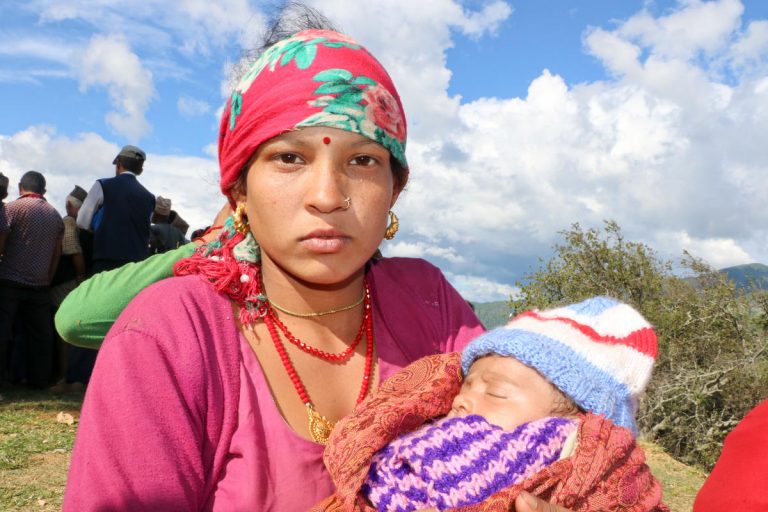By Eric Swedberg and Steve Wall
Hundreds of participants including government ministers and senior planners from high-burden countries, leaders of United Nations and multi-lateral development agencies, major donors, non-governmental organizations, corporations and pneumonia researchers will be meeting this week for the first ever Global Forum on Childhood Pneumonia. During our careers in child health, we have been to many global meetings on child health issues (e.g. Malaria, Nutrition or Integrated Community Case Management), but we have never participated in a meeting with a major focus on pneumonia.
We are excited about this first global meeting with a specific focus on pneumonia, which is the biggest infectious killer of children. Over a decade ago, child health leaders successfully advocated to establish the first World Pneumonia Day to shine the spotlight on this neglected disease. Now the global health community is gathering in a forum to call for action to deliver on concrete measures with the potential to save hundreds of thousands of children’s lives.
Last week a colleague told the team she would be late for work because her husband was showing some pneumonia like symptoms – labored breathing two nights in a row. Assessment including a chest X-ray confirmed it was post flu pneumonia and the doctor quickly started him on a course of antibiotics. In the United States, we would be shocked if a child died from pneumonia. This was a fresh reminder that people, both adults and children, get pneumonia everywhere, but when there is access to appropriate diagnosis and treatment, deaths from pneumonia are rare.
Sadly, as those of us working on child survival know well, millions of children still do not receive the vaccines, affordable antibiotics and routine oxygen treatment that would prevent this global epidemic. Tens of millions of children are still going unvaccinated and one in three children with symptoms do not receive essential medical care.
Reducing the number of children getting sick and dying from pneumonia will require achieving universal access to primary health care, so that all children have access to vaccination and nutrition services, and to good quality diagnosis and treatment. Multi-sectoral actions are needed to ensure that all children have clean air to breath, sufficient nutritious food to eat and access to safe water, sanitation and hygiene.
Many countries still have not introduced PCV because of a variety of factors, including high vaccine prices, underfunded health budgets and conflict situations. Governments must improve immunization delivery and donors and the global health community should support governments to strengthen primary health care, create a reliable supply chain system, and focus on the children missing out.
We know that IMCI delivered at primary care facilities and ICCM delivered by community health workers are critical strategies to address pneumonia and other key causes of child illness. However, we know how many high burden countries struggle to deliver high quality integrated care at the community and primary health care levels. Countries and their international partners need to close the gaps in access to quality care.
Throughout childhood, the greatest risk of death from pneumonia is in the neonatal period and these deaths are mostly among low birth weight babies. The most severe pneumonia for newborns is ‘early-onset’ – within the first 72 hours – and requires immediate injectable antibiotics, and usually supportive care (e.g. oxygen, CPAP and/or ventilator assistance). Without timely and appropriate antibiotics and supportive care, these newborns face an alarmingly high case fatality rate.
Recent research findings have led to changes in global guidelines for serious newborn infections. For young infants 0-59 days, with rapid breathing as the only sign, oral amoxicillin without hospitalization may be provided through IMCI programs by first-level health providers – the exception being first week of life newborns, for whom hospitalization and injectable antibiotics is recommended.
For newborns with more serious signs of infection/pneumonia (e.g. severe chest in-drawing and decreased ability to breastfeed), newborns should be referred to a hospital; but if hospitalization is not feasible, they may be treated in outpatient clinics with gentamicin injections and oral antibiotics.
Treating newborn and young infant pneumonia requires specific skills to make the correct diagnosis, as well as special training for frontline health workers to learn how to provide appropriate referral and treatment. Many pneumonia initiatives currently do not include young infants 0-59 days.
Programs are increasingly including newborn pneumonia and sepsis management, but this effort remains nascent or non-existent in many countries. We must remember these most vulnerable children and ensure that service delivery for childhood pneumonia includes or it is linked to programs to treat newborns and young infants with serious, life-threatening illness such as pneumonia.
2020 is the year to act!
There are clear actions that governments and those of us in the global community can and must take to improve child survival. The progress made so far is not enough, and comprehensively addressing pneumonia is key for child survival. We need concerted actions to improve policies, investment and innovations, and scale up evidence-based interventions if we are to leave no child behind and save lives.
